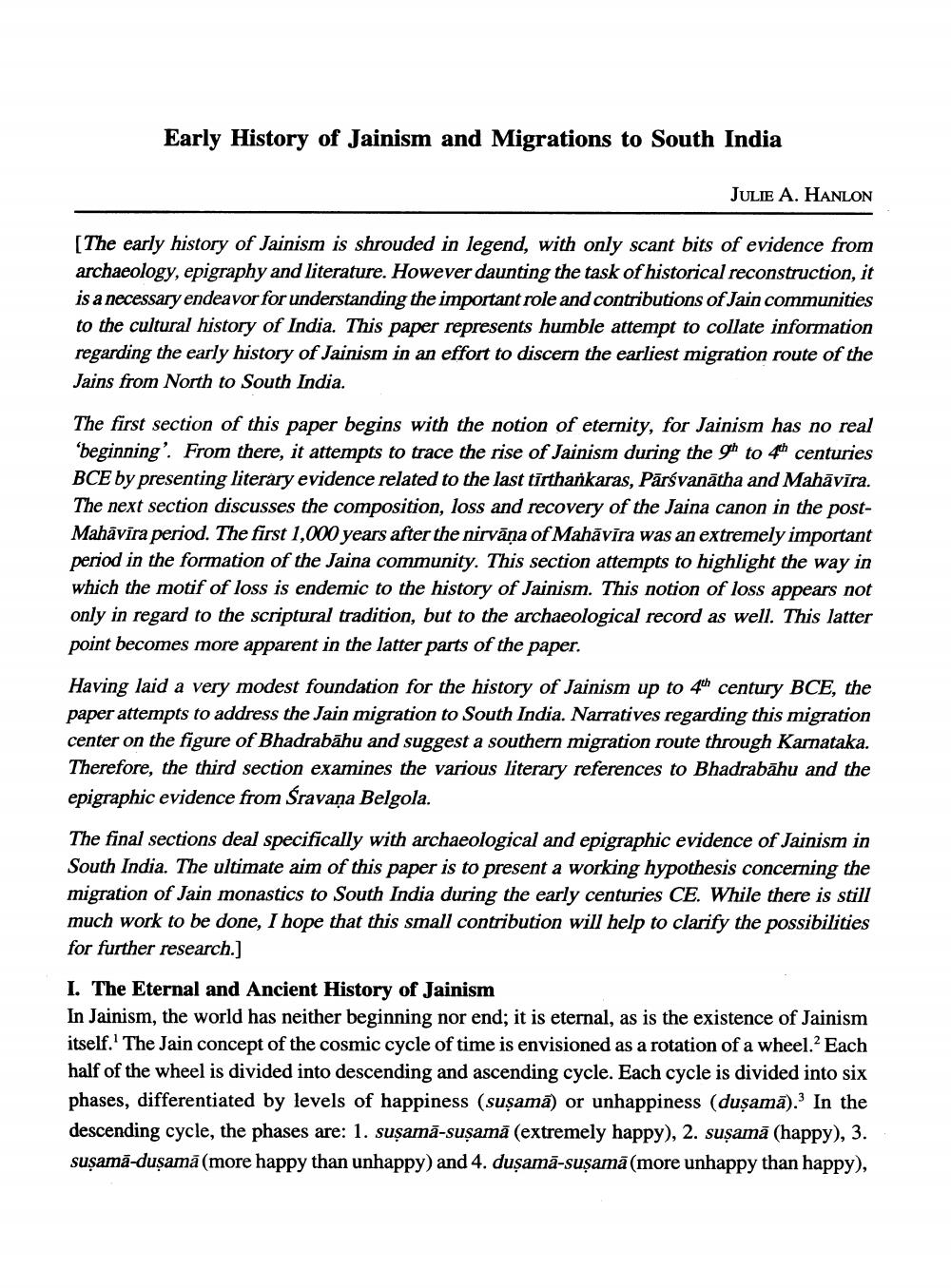________________
Early History of Jainism and Migrations to South India
JULIE A. HANLON
[The early history of Jainism is shrouded in legend, with only scant bits of evidence from archaeology, epigraphy and literature. However daunting the task of historical reconstruction, it is a necessary endeavor for understanding the important role and contributions of Jain communities to the cultural history of India. This paper represents humble attempt to collate information regarding the early history of Jainism in an effort to discern the earliest migration route of the Jains from North to South India.
The first section of this paper begins with the notion of eternity, for Jainism has no real ‘beginning'. From there, it attempts to trace the rise of Jainism during the gh to 4 centuries BCE by presenting literary evidence related to the last tirtharkaras, Pārsvanātha and Mahāvīra. The next section discusses the composition, loss and recovery of the Jaina canon in the postMahāvīra period. The first 1,000 years after the nirvāṇa of Mahāvīra was an extremely important period in the formation of the Jaina community. This section attempts to highlight the way in which the motif of loss is endemic to the history of Jainism. This notion of loss appears not only in regard to the scriptural tradition, but to the archaeological record as well. This latter point becomes more apparent in the latter parts of the paper.
Having laid a very modest foundation for the history of Jainism up to 4th century BCE, the paper attempts to address the Jain migration to South India. Narratives regarding this migration center on the figure of Bhadrabāhu and suggest a southern migration route through Karnataka. Therefore, the third section examines the various literary references to Bhadrabāhu and the epigraphic evidence from Sravana Belgola.
The final sections deal specifically with archaeological and epigraphic evidence of Jainism in South India. The ultimate aim of this paper is to present a working hypothesis concerning the migration of Jain monastics to South India during the early centuries CE. While there is still much work to be done, I hope that this small contribution will help to clarify the possibilities for further research.)
I. The Eternal and Ancient History of Jainism In Jainism, the world has neither beginning nor end; it is eternal, as is the existence of Jainism itself.' The Jain concept of the cosmic cycle of time is envisioned as a rotation of a wheel. Each half of the wheel is divided into descending and ascending cycle. Each cycle is divided into six phases, differentiated by levels of happiness (suşamā) or unhappiness (duşamā). In the descending cycle, the phases are: 1. suşamā-suşamā (extremely happy), 2. suşamā (happy), 3. suşamā-duşamā(more happy than unhappy) and 4. duşamā-suşamā(more unhappy than happy),




